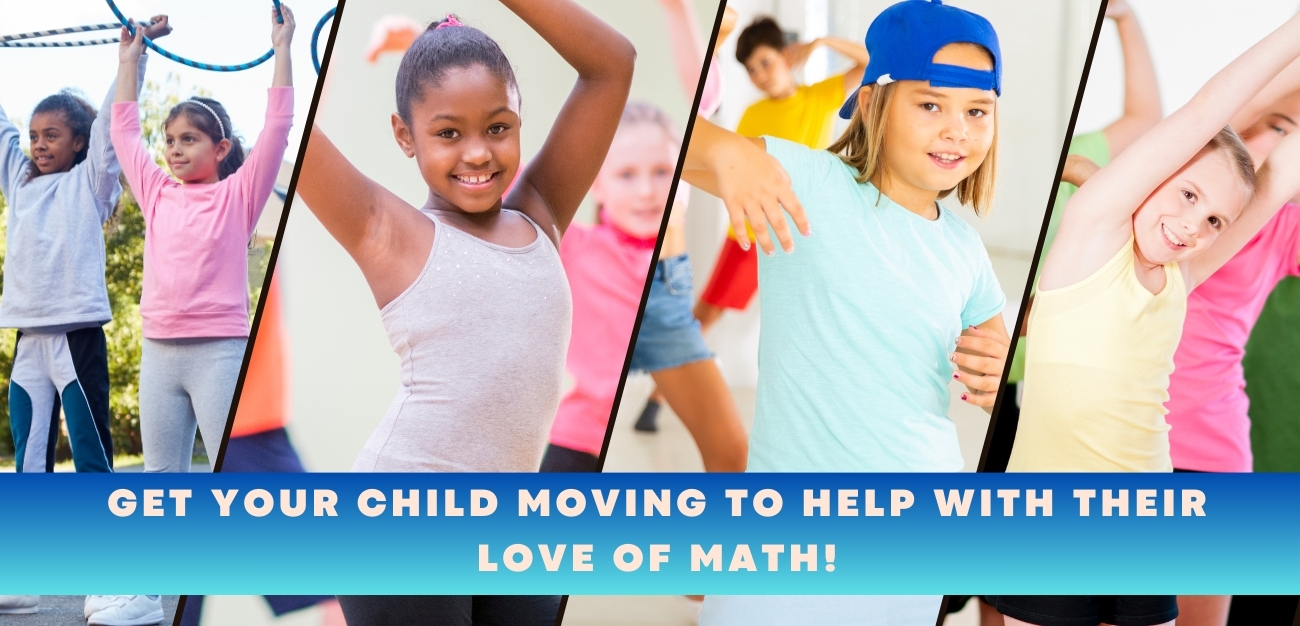As a parent, you’re continuously providing your child with opportunities to learn and grow. Whether equipping their tool belt with multiplication tables or calculus concepts, Mathematics can often be a daunting subject. But what if we told you that infusing a bit of children’s exercise could spark your child’s interest in Math, if not transform the way they learn it? That’s right! Movement’ and ‘Mathematics’ can be a delightful duo, immensely benefiting your child’s learning curve. Intrigued? Let’s dive in.
Creativity is about more than just artistic expression. It involves innovative approaches to problem-solving, synthesizing information in new ways, and thinking ‘outside the box.’ In terms of math education, we can apply this creative mindset by integrating physical activities into our curriculum. If we move beyond the traditional blackboard-and-desk setup, we might just kindle a passion for equations and numbers in our youngsters. Let’s explore how!
Why Movement Matters
Humans are inherently kinetic. From an evolutionary standpoint, our brains developed to support a physically active lifestyle. In children, physical activity is not only enjoyable but also instrumental in their cognitive development. Here’s why:
- Movement optimizes the child’s mind for learning, preparing it to soak up new information.
- Physical activity fosters an environment of ‘active learning’, which is far more engaging than sedentary learning.
- Exercise can actually stimulate parts of the brain involved in mathematical thinking.
Now, the question on your mind might be, “How do I promote this active learning?”, “How do I encourage my child to marry mathematics with movement?”. Don’t worry, we’ve got your covered!
Unlocking The Math Genius: How Children’s Exercise Boosts Brain Function
Have you ever wondered why your child seems more focused and centred after physical activity? There’s an explanation for that – physical exercise improves brain function. It seems rather unusual, doesn’t it? Let’s break it down for you:
When kids engage in physical activity, their heart rates increase which in turn boosts blood flow to all body parts, including the brain. The brain, being a highly vascular organ, thrives on this increased influx of blood. This increased blood flow delivers more oxygen and nutrients to the brain, which provides the necessary materials for the brain to function optimally. This results in improved cognition, focus, and memory – all of which are crucial components for learning math concepts.
Remember, a healthy body cultivates a healthy mind, and a healthy mind is more receptive to learning.
But, that’s not the whole story. Physical activity does more than just improve brain function; it’s also believed to stimulate neurological development by promoting the creation of neural connections.
- Improved Memory: Exercise stimulates the production of a protein called brain-derived neurotrophic factor (BDNF). BDNF improves memory and learning by enhancing neural health and promoting the growth of new neurons.
- Stress Reduction: Physical activity is known to reduce stress levels in the body. Exercise stimulates the release of endorphins, which are chemicals in the brain that act as natural painkillers and mood elevators.
- Attention and Focus: Regular exercise can help children with attention disorders. By improving blood flow to the brain, physical activity can improve a child’s attention span and concentration.
Indeed, the relationship between physical activity and enhanced cognitive function is so strong that it’s almost impossible to consider them separately. So, let’s come up with a ‘move and learn’ plan for your child.
From Counting Steps To Counting Numbers: How Walking Enhances Math Abilities
Isn’t it fascinating that something as simple as walking can give your child’s math skills a significant boost? Indeed, the art of integrating movement with academic learning is known surprisingly as Kinesthetic Learning. Let’s dive deeper into how you can utilize this little-known but highly effective approach.
Research indicates that the brain is more receptive to learning when the body is engaged in moderate physical activity. Walking happens to be an excellent activity that fits this criteria. Encouraging your child to recite multiplication tables or solve basic arithmetic problems while taking a stroll around the park can build their mathematical aptitude.
Turning Practicals into Problems
Children have a sense of wonder with the world, hence by using everyday objects and occurrences, we can convert their playful walks into mental math-solving expeditions. Ask them to calculate how many steps it will take to reach from one end of the park to the other. Or, they could estimate the number of red cars they might spot during their walk. This way, they would be exercising their math skills without even realizing it.
Real World Application
If you think about it, isn’t the real world one big word problem waiting to be solved? By practicing math in this manner, your child won’t just learn formulas or procedures, but they will understand the core concepts and learn to apply math in real-life scenarios. This will significantly help them in their future studies and careers.
A Healthy Habit
Let’s not forget the added health benefits of this practice. Walking is a low impact, full-body exercise that not only builds physical stamina, but also helps children to concentrate better and maintain focus. Plus, the fresh air and natural light can help to boost their mood too!
Engaging in brain-boosting physical activity is like hitting two birds with one stone. You provide your child with a healthy hobby and a unique learning environment at the same time.
So, the next time your child seems stuck or demotivated in their math lessons, do not fret. Add some physical activity to the equation and watch their love for math rekindle!
Active Math Games: Combining Exercise And Learning For Maximum Fun
As parents, we’re always striving to find the perfect balance between learning and fun. But it isn’t just walking that can help your child become more interested in math. So, let’s explore some active math games that don’t just engage the muscles, but also the mind.
- Hopscotch Math
Classic hopscotch is already filled with math – counting scores, adding, and subtracting as you hop about. But let’s go a notch higher. Instead of ordinary numbers on the squares, use math problems. As your child jumps to a square, they need to solve the problem before advancing.
- Number Line Run
Draw a long number line on the ground using chalk. Call out a math problem, and your child has to run to the correct answer on the number line. It’s not only a fun exercise but also a practical demonstration of addition and subtraction problems.
- Math Tag
Turn the classic game of tag on its head. Everyone is ‘it’, and the goal is to solve a math problem. Each player has a number, and when your number is called, you must run to avoid being tagged. If you are tagged before you solve the problem, then you’re ‘it’ next!
Flexible, engaging, and super fun – physical math games like these aren’t just entertaining. They’re a fantastic tool to make math come alive for your child. Remember, the goal isn’t merely to win — it’s to understand and engage with the beautiful world of mathematics while being on the move!
Keep mix up the games, keep the rules flexible, and most importantly, have loads of laughter because fun is the ultimate motive. So let’s get our children moving and nurturing their inner math whiz!
Children’s Exercise For Math Help
In closing, integrating physical movement with math education results in a well-rounded, engaging, and beneficial learning experience for your child. The combination of math and exercise not only stimulates their brain but also strengthens the bond between children and math, making this seemingly complex subject much more enjoyable and memorable.
Start employing these creative means to make math fun and active, and watch your child’s love for numbers soar. When looking for help with your child’s homework, don’t forget to get them moving so they can perform better.
So let’s cast aside the conventional methods and adopt this innovative approach to learning math. Get set, get moving, and let the math magic begin!
Sign up for our Bulletin and get more tips for help with your child’s homework.





